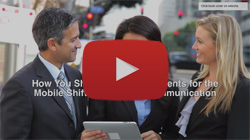
Answers to Discussion Questions:
1. How could Uber's communication address controversies better? What strategies could rebuild trust and image?
Empathy and Transparency: Acknowledge concerns genuinely, expressing regret and outlining concrete steps to address issues.
Clear and Concise Language: Avoid jargon and technical terms, focusing on plain language that resonates with a broad audience.
Proactive Communication: Regularly update stakeholders on progress and demonstrate a commitment to improvement.
Multiple Channels: Utilize various communication channels (press releases, social media, direct communication) to reach diverse audiences.
Openness to Feedback: Actively listen to concerns and incorporate feedback into communication strategies.
2. What broader communication lessons can students learn from Uber's case? How can these lessons be applied in real-world situations?
Crisis communication planning: Develop clear communication protocols for various scenarios to ensure timely and effective responses.
Audience awareness: Tailor messages to specific stakeholders, considering their needs, concerns, and preferred communication channels.
Importance of tone and language: Choose respectful and empathetic language that fosters trust and understanding.
Transparency and accountability: Be honest about challenges and take responsibility for mistakes, demonstrating a commitment to learning and improvement.
Building trust through action: Translate communication into concrete actions that address concerns and demonstrate a commitment to positive change.
By understanding these lessons and applying them proactively, students can navigate challenging situations, build trust with stakeholders, and protect their organization's reputation.
 Excellence in Business Communication teaches students to communicate effectively, empathetically, and transparently, which could have helped Uber handle controversies better. The book emphasizes audience analysis, clear messaging, and active listening—crucial skills for addressing concerns genuinely.
Excellence in Business Communication teaches students to communicate effectively, empathetically, and transparently, which could have helped Uber handle controversies better. The book emphasizes audience analysis, clear messaging, and active listening—crucial skills for addressing concerns genuinely.
It also covers crisis communication, teaching students to take responsibility, express empathy, and outline corrective actions. Moreover, the book highlights the importance of aligning words with actions to build trust. By applying these principles, Uber could have fostered open dialogue, acknowledged issues, and clearly communicated steps to resolve them, thereby strengthening relationships with stakeholders.
The book equips students with the communication skills to navigate challenges and build trust.



